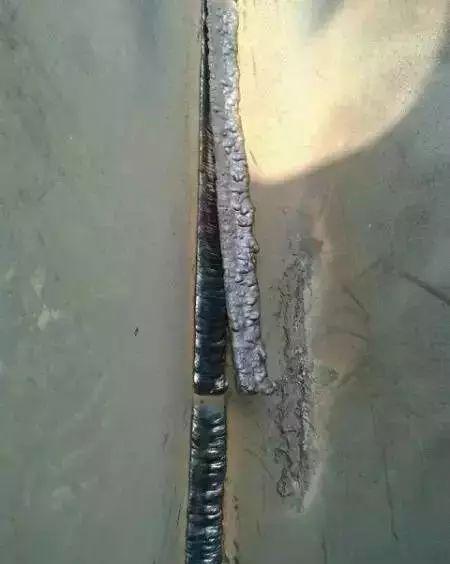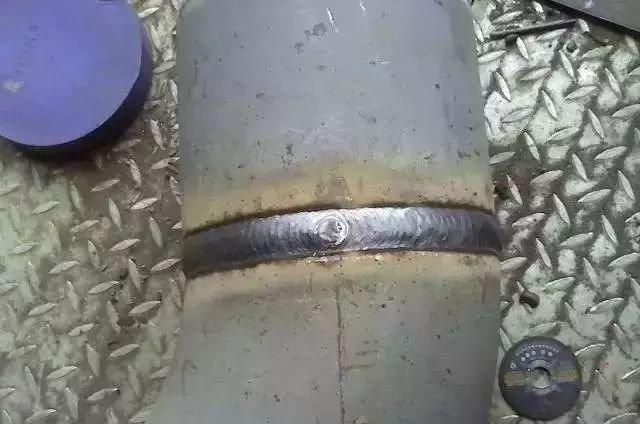Every welder The same technique, but different feels Welded welds, each has its own merits Found the feeling The technology of electric welding is really learning home. No matter what electrode Length of pause on both sides Swing amplitude, method Only long-term practice Can be outstanding Welding method is dead Feel is alive There is no shortcut to the welding world Those welding techniques only belong to Hearted person and so a person who can't weld a beautiful weld Maybe your inspiration is not enough The most common welding material for manual welding is ordinary carbon steel. The most commonly used welding rods for users are J422, J506 and J507. J422 is an acid electrode, which is easier to weld, has less splash and less smoke. 422 electrode can be used for both AC and DC, but DC welding is easy to arc, long arc welding, slightly longer than 507, arc too long will also vent. The length of this arc can only be compared when soldering, and it is impossible to use the ruler. The current is smaller and the cover is beautiful. J506 and J507 are alkaline electrodes, and their coatings are easy to get wet. They should be dried before welding, so the smoke is large, and it is easy to produce bubbles when it is not well dried. Alkaline electrode can only be reversed by DC, short arc operation, long arc is easy to vent. Do not break the edge of the groove at the end of the filling, so that the cover can guarantee a straight line, except for the welding master. The J422 is well welded, and the J507 is well welded from cracks. J422 is used for welding low-carbon steel and structural steel, which is suitable for all-position welding of AC and DC power supplies. Both 506 and 507 are alkaline electrodes for the welding of high-carbon steels, high-carbon steels and alloy steels, which can only be welded with DC power. Civil J422 and J506 are more commonly used, and there are more J507 and J427 used in industry. But the civilian 3.2 diameter is used more. Where acid electrodes and alkaline electrodes can meet the requirements, acid electrodes are used as much as possible, and the price is lower. In addition, there are stainless steel welding rods, domestic stainless steel welding rod welding flat welding is still beautiful, all-position welding or arc-extinguishing welding method is better. Some imported stainless steel electrodes, all-position welding can also be welded by arc. Deep groove ball bearings are the most common type of rolling bearings. Deep Groove Ball Bearing,Abrasion Resistant Bearing,Deep Groove Balls Bearings,Bearings 30217 Hebei Fangqiang bearing manufacturing Co., LTD , https://www.fangqiangbearing.com






The basic type of deep groove ball bearing consists of an outer ring, an inner ring, a set of steel balls and a set of retaining frames. There are two types of deep groove ball bearings: single row and double row, and the deep groove ball structure is also divided into two structures: sealed and open, open means that the bearing does not have a sealed structure, and the sealed deep groove ball is divided into dustproof seal and oil-proof seal. The dust seal cover is made of steel stamping, which simply prevents dust from entering the bearing raceway. The oil-proof type is a contact oil seal, which can effectively prevent the grease in the bearing from escaping.
The type code for single row deep groove ball bearings is 6, and the code for double row deep groove ball bearings is 4. Its structure is simple, easy to use, is the most common production, the most widely used type of bearing.
How it works
Deep groove ball bearings are mainly subjected to radial loads, but can also bear both radial loads and axial loads. When it is only subjected to radial loads, the contact angle is zero. When the deep groove ball bearing has a large radial clearance, it has the performance of angular contact bearing, can bear a large axial load, the friction coefficient of the deep groove ball bearing is very small, and the limit speed is also very high.
Bearing characteristics
Deep groove ball bearings are the most commonly used rolling bearings. Its structure is simple and easy to use. It is mainly used to bear radial load, but when the radial clearance of the bearing is increased, it has the performance of a certain angular contact ball bearing, and can bear the combined load of radial and axial directions. When the speed is high and thrust ball bearings are not suitable, they can also be used to bear pure axial loads. Compared with other types of bearings with the same specifications and dimensions as deep groove ball bearings, this type of bearing has a small friction coefficient and a high ultimate speed. However, it is not resistant to impact and is not suitable for bearing heavy loads. [2]
When the deep groove ball bearing is mounted on the shaft, the axial displacement of the shaft or housing can be limited within the axial clearance range of the bearing, so that it can be positioned axially in both directions. In addition, this kind of bearing also has a certain self-aligning ability, when it is inclined to 2′~10′ relative to the bore of the shell, it can still work normally, but it has a certain impact on the bearing life.
Structure and classification
broadcast
edit
Bearing construction
Deep groove ball bearings have a simple structure and are easy to achieve high manufacturing accuracy compared with other types, so they are convenient for mass production in series, and the manufacturing cost is also low, and they are extremely commonly used. In addition to the basic type, there are various variant structures of deep groove ball bearings, such as: deep groove ball bearings with dust covers, deep groove ball bearings with rubber seals, deep groove ball bearings with stop grooves, deep groove ball bearings with large load capacity with ball notch, and double row deep groove ball bearings